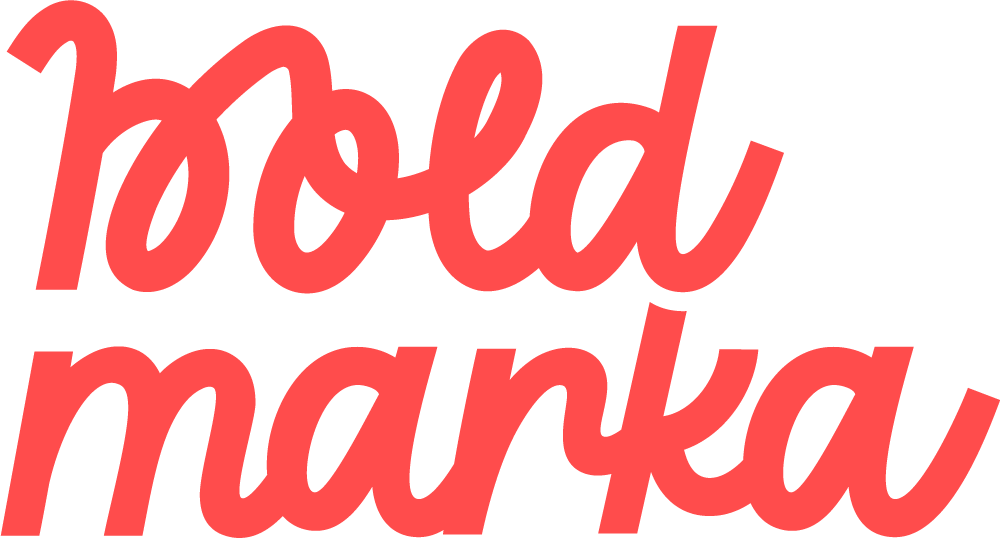The Ultimate Guide to Co-Branding For Life Coaches
Co-branding isn’t just another buzzword in marketing—it’s a transformative strategy that allows two brands to combine their strengths and deliver unique value to their customers. In today’s highly competitive market, standing out requires more than just great products; it demands innovation and collaboration. But what exactly is co-branding, and why is it a game-changer?
In this comprehensive guide by Bold Marka, a creative agency known for its expertise in brand strategies, we’ll explore every facet of co-branding: its definition, benefits, challenges, and the latest trends. Whether you’re a startup or a global corporation, this guide will equip you with actionable insights to leverage co-branding as a tool for growth and visibility.

Imagine a group of three friends standing side by side, each with her own strengths and skills. One is a visionary, always dreaming up new ideas and thinking outside the box. Another is a master of details, meticulously organizing and ensuring everything runs smoothly. The third is a communicator, able to bring everyone together, inspire action, and solve problems along the way. They each have their own individual goals and dreams, but when they come together, magic happens. They start working on a business project, each contributing their expertise. The visionary comes up with creative concepts, the organizer ensures the project stays on track, and the communicator keeps the group motivated and aligned with the same vision.
Co-branding is a strategic partnership where two brands collaborate to create a product or campaign that leverages the strengths of both. This synergy allows both brands to reach new audiences, enhance credibility, and boost customer trust. By combining resources and expertise, co-branding can create unique value and drive mutual success.
1. Defining Co-Branding and Key Concepts
1.1 What is Co-Branding?
Co-branding, also known as co-marketing, is a strategic collaboration between two brands that come together to create a joint product or campaign. This approach leverages the strengths, audiences, and reputations of both brands to amplify their impact in the market. Co-branding is a marketing strategy where two or more brands collaborate to create a product, service, or campaign that highlights the strengths of each brand. This partnership allows brands to share resources, expand their reach, and offer consumers unique value by combining their reputations, expertise, and customer bases. Co-branding can help increase brand visibility, build trust with new audiences, and create innovative offerings that stand out in the market.
1.2 How Co-Branding Differs from Traditional Partnerships
While traditional partnerships often involve independent operations, co-branding integrates both brands into a single offering. For example, co-branded products will typically feature both companies’ logos and marketing efforts to create a seamless collaboration.
As a creative agency, Bold Marka plays a crucial role in linking two or more effective brands or businesses for successful co-branding. Bold Marka acts as the bridge between the brands, identifying complementary values and synergies that can be leveraged for mutual success. By creatively aligning the brands’ messages, design elements, and target audiences, Bold Marka ensures that the collaboration feels seamless and resonates with consumers. Their expertise in brand positioning and strategic partnerships helps deliver a co-branded experience that amplifies the strengths of each partner, driving increased brand equity and consumer engagement.
1.3 Types of Co-Branding
ypes of Co-Branding can be broadly categorized into the following types, each serving a different strategic purpose:
Ingredient Co-Branding: One brand contributes a component or ingredient to another brand’s product. This type of co-branding often emphasizes quality and innovation through the integration of one brand’s expertise into the other’s product.
Bold Marka’s Role: Bold Marka defines this element by carefully curating how one brand’s product or service complements and enhances the other. They ensure that the integration is seamless and that the customer perceives both brands as offering a valuable, enhanced experience.Joint Venture Co-Branding: Two or more brands come together to create a completely new product or service that neither could offer alone. This is a high-level collaboration where the brands share the risks and rewards.
Bold Marka’s Role: Bold Marka facilitates the joint venture by aligning the brands’ goals, visions, and market strategies. They help design a unique product or service that blends the strengths of each brand, ensuring that it feels cohesive, innovative, and appealing to the target audience.Dual-Branding: Both brands maintain their individual identities while sharing a platform, such as a marketing campaign or an event, which enhances the exposure of both brands.
Bold Marka’s Role: Bold Marka defines this element by strategically managing the balance between both brands, ensuring their distinct identities are maintained while amplifying the shared value proposition. They craft messaging and visuals that represent both brands equally, creating a unified experience without losing individuality.
2. The Benefits of Co-Branding
2.1 Enhancing Credibility and Brand Awareness
Co-branding allows brands to leverage each other’s reputation, creating instant credibility. By associating with an established partner, a lesser-known brand can elevate its market perception and gain new loyal customers.
Enhancing credibility and brand awareness through co-branding allows brands to leverage each other’s reputation and reach. When two reputable brands collaborate, they build trust with consumers by associating themselves with a known and respected partner. This boosts the credibility of both brands, especially when they target similar or complementary audiences. Additionally, co-branding expands visibility, as the collaboration introduces each brand to new customer bases, leading to increased brand awareness and potential growth in market share.
2.2 Sharing Costs and Resources
A co-branding campaign enables brands to pool their resources, from design and development to marketing budgets. This shared responsibility reduces costs while maximizing the campaign’s reach and efficiency.
Sharing costs and resources through co-branding allows brands to pool their financial and operational resources, making it easier to launch campaigns or create products that would be expensive or challenging to execute individually. By collaborating, brands can split the costs of marketing, production, and distribution, reducing financial risk while maximizing impact. This shared investment also allows brands to access each other’s networks, expertise, and technologies, resulting in more efficient use of resources and the ability to create high-quality offerings that might otherwise be out of reach.
2.3 Expanding Market Reach
Co-branding opens doors to new customer bases by allowing each brand to tap into the other’s audience. For example, a fitness brand partnering with a tech company can attract tech-savvy individuals interested in health and wellness.
Expanding market reach through co-branding enables brands to tap into each other’s customer bases and extend their presence into new markets. By partnering with another brand, each brand gains access to a broader audience that may not have been reachable on their own. This collaboration allows both brands to increase their visibility, attract new customers, and create cross-promotional opportunities, ultimately driving growth and enhancing their position in the market. Co-branding helps both brands leverage each other’s strengths to enter new territories and increase their overall market share.
Successful Co-Branding Examples
Nike and Apple: Where Technology Meets Fitness
Nike and Apple revolutionized fitness tracking with the launch of Nike+, a co-branded product that integrates Apple’s technology with Nike’s athletic expertise. This partnership redefined how consumers track their health and workout progress.
The collaboration between Nike and Apple is a prime example of co-branding that blends technology with fitness. This partnership focuses on combining Nike’s expertise in athletic wear and performance with Apple’s innovation in technology, particularly through wearable devices.
Key Aspects of the Nike and Apple Collaboration:
- Nike Training and Nike Run Club Apps: Apple and Nike have worked together to develop fitness apps, such as the Nike Training Club and Nike Run Club, which integrate with Apple devices like the iPhone, Apple Watch, and iPad. These apps provide personalized workout plans, progress tracking, and virtual coaching, creating a seamless fitness experience for users.
- Apple Watch Nike+: One of the most notable products from this partnership is the Apple Watch Nike+, a version of the Apple Watch designed specifically for runners and fitness enthusiasts. It features unique Nike watch faces, fitness-focused tracking features, and integration with the Nike Run Club app. The watch also offers features like heart rate monitoring, GPS tracking, and workout syncing, all tailored for athletes.
- Shared Values and Consumer Engagement: Both brands target active, health-conscious consumers, making this collaboration a perfect match. Apple’s advanced technology complements Nike’s focus on fitness and sports, and together, they provide a comprehensive ecosystem that motivates users to stay active and reach their fitness goals.
- Cross-Promotion and Increased Brand Reach: By combining Nike’s global reach in athletic apparel and Apple’s dominance in consumer electronics, this partnership has allowed both companies to expand their presence in each other’s markets. Apple benefits from Nike’s strong athletic community, while Nike gains access to Apple’s tech-savvy audience.
This collaboration stands out for its ability to blend fitness and technology in a way that enhances the consumer experience. It allows users to track, monitor, and improve their fitness journey with innovative, easy-to-use technology. It’s a prime example of how co-branding can create new, integrated products that offer real value to consumers, bridging the gap between physical activity and digital connectivity.
Starbucks and Spotify: Creating Immersive Customer Experiences
The collaboration between Starbucks and Spotify is a prime example of co-branding aimed at creating immersive and engaging customer experiences. In 2015, the two brands partnered to enhance the coffee shop experience by integrating Spotify’s music streaming service into Starbucks’ environment. This collaboration allowed Starbucks customers to enjoy curated playlists while in-store, and even provided them with the ability to influence the music selection through the Starbucks app. Additionally, Starbucks employees, known as “partners,” could access exclusive playlists created by the company, bridging the connection between work culture and music. The partnership also created a rewards system where Starbucks loyalty members could earn rewards through Spotify, further linking the two brands in a way that benefits customers beyond just coffee and music. By combining Starbucks’ global reach and community feel with Spotify’s music streaming capabilities, the partnership created a unique, engaging experience that enhanced both brands’ appeal, drove foot traffic, and strengthened customer loyalty. The collaboration seamlessly integrated lifestyle, music, and coffee, showing how brands can leverage each other’s strengths to offer a rich, memorable experience to consumers.
H&M and Balmain: Making High Fashion Accessible
The collaboration between H&M and Balmain in 2015 marked a significant moment in the fashion industry, as the two brands teamed up to make high fashion more accessible to the mass market. This co-branding partnership combined H&M’s affordable, fast-fashion model with Balmain’s luxurious, high-end designs, allowing consumers to purchase items inspired by the prestigious French fashion house at a fraction of the price. The collection, which included clothing and accessories, was available in limited quantities, creating a sense of exclusivity while still being affordable for the average shopper. The collaboration generated a massive buzz, drawing attention from both fashion enthusiasts and mainstream consumers, and sold out quickly in stores worldwide. By leveraging Balmain’s renowned reputation for couture-quality design and H&M’s global reach and affordability, the partnership bridged the gap between luxury fashion and everyday shoppers, making high-end style more accessible while driving both brands’ visibility and engagement. This co-branding effort demonstrated how combining different market segments can create excitement and bring fashion innovation to a broader audience.
Frequently Asked Question
What is Co-Branding?
Co-branding is a collaboration between two brands to create a joint product or campaign.
What are the Benefits?
Increased credibility, cost sharing, and access to new markets are some key benefits.
Who Should Use Co-Branding?
Brands of all sizes, as long as they share aligned goals and values.
How to Measure Success?
Track KPIs such as customer engagement, sales growth, and social media reach.
How did the H&M and Balmain collaboration impact the fashion industry?
The H&M and Balmain collaboration made high fashion more accessible to a wider audience by offering Balmain’s luxury designs at an affordable price point. It generated significant buzz, attracting both fashion enthusiasts and everyday consumers, and showcased how collaborations between high-end and fast-fashion brands can drive innovation, boost sales, and increase brand visibility for both parties.
What was the main appeal of the H&M and Balmain collection?
The main appeal of the H&M and Balmain collection was its ability to offer exclusive, high-quality, couture-inspired designs at a fraction of the usual luxury prices. The limited availability of the collection added to its allure, creating a sense of exclusivity while allowing fashion lovers to own pieces from a prestigious brand without breaking the bank.
Ready to make your brand bold ?
Working with Bold Marka is simple, smooth, and results-driven. From the first call to the final delivery, we take care of everything—so you can focus on your business while we make your brand thrive.



